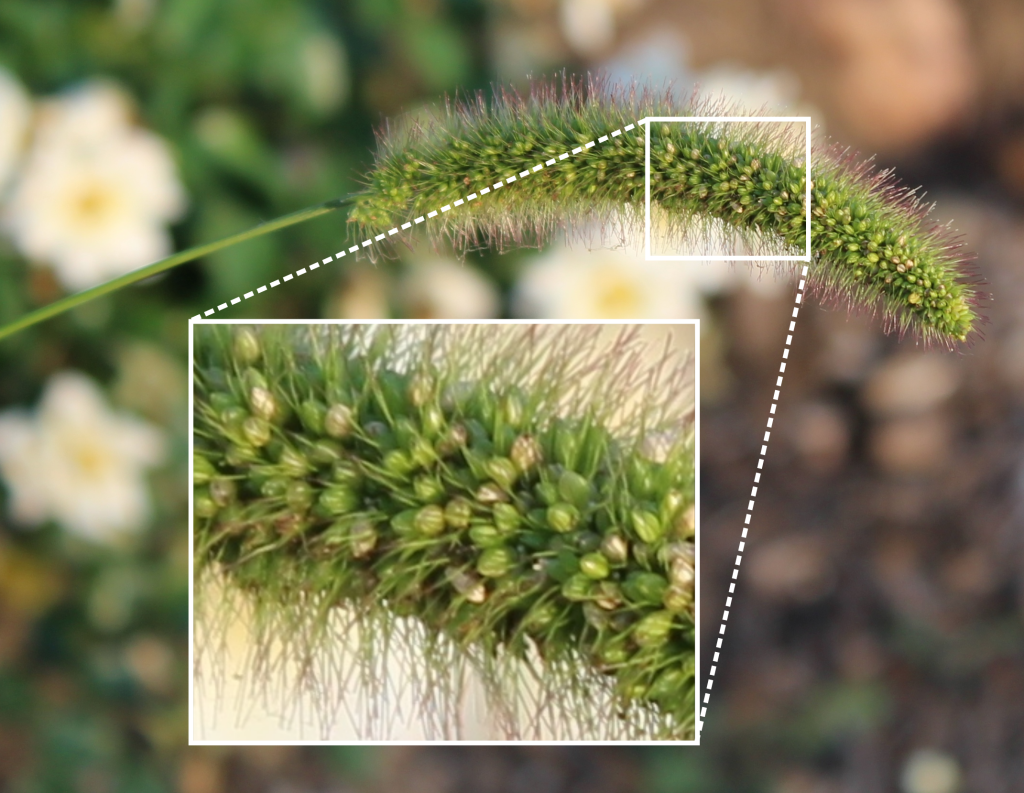So I’m now confident the Setaria photo in the last post was yellow foxtail (Setaria pumila). One of the key diagnostic criteria is the larger spikelets of yellow foxtail relative to green foxtail (Setaria viridis), which sounds fine on paper, but you need a reference point to compare against. Now I have one. This is either Setaria viridis or Setaria faberi* but either way you can see the much smaller spikelets than yellow foxtail.

Setaria viridis or Setaria faberi. Setaria faberi is an allotetraploid formed by a cross between Setaria viridis and a closely related species.
*From the description of Setaria faberi “Characteristic foxtail-like seedhead that droops when mature and leaves with many hairs on the upper leaf surface, which helps to distinguish this weed from both Green Foxtail (Setaria viridis) and Yellow Foxtail (Setaria glauca**). Giant foxtail may be identified by the presence of many short hairs on the upper surface of the leaf blades, unlike the other foxtails.”
Source: Division of Plant Biology, University of Missouri: http://weedid.missouri.edu/weedinfo.cfm?weed_id=256

We just discovered a patch of Giant foxtail in Oregon. First in the Pacific Northwest. I was interested in you comment here that this plant is an allotetraploid formed by a cross between Setaria viridis and a closely related species.
I am not a botanist or a geneticist and wonder if this has any managment implications for us?
Thanks…
Comment by Mark Porter — December 22, 2016 @ 8:39 am